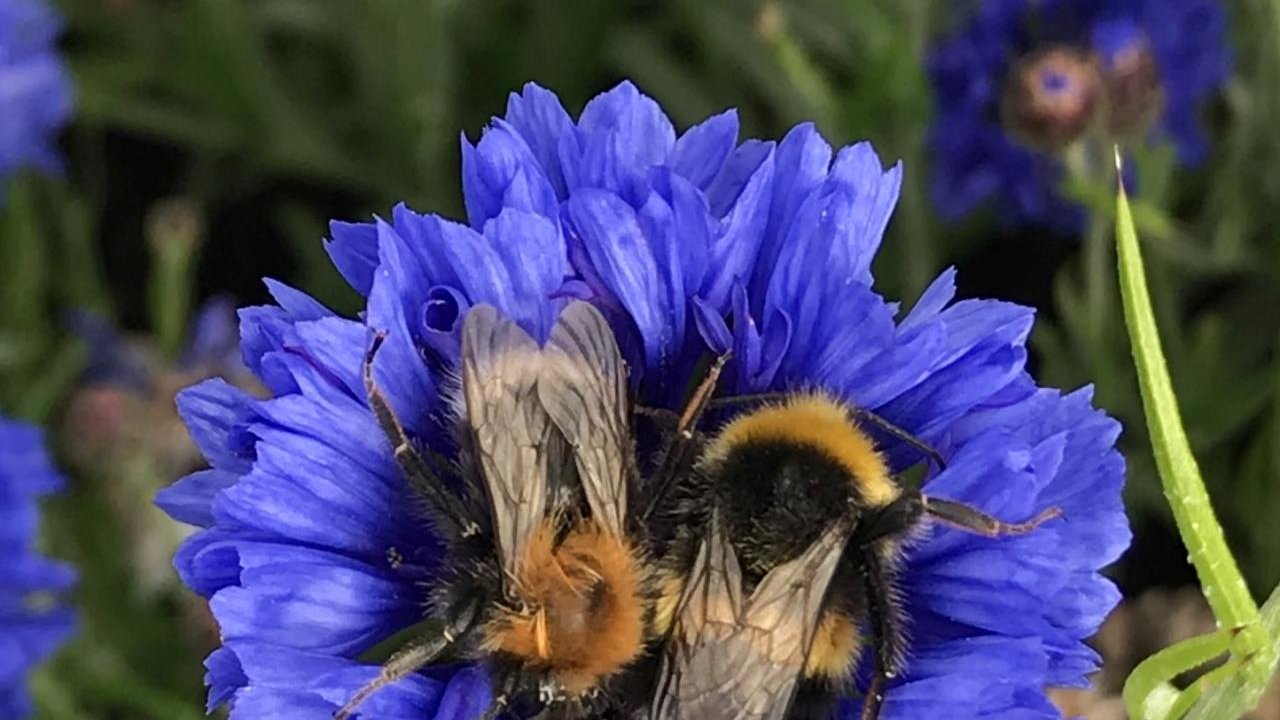
When you think about it, of course bees must sleep, but it’s something we rarely—if ever—witness. Here are some BEE-utiful photos of bees caught napping.
Bee kippers: when the buzz gets too much and they simply have to crash out
You have probably heard the comparison of an big organisation to a beehive, and the metaphor finds its origins in our perception of bees. Bees are known to be tenacious workers who toil relentlessly, whether they’re collecting nectar, building a new hive, making delicious honey, protecting their queen or just generally buzzing around. But in their incessantly busy lives, do bees ever find the time to pause and rest? Do they sleep? Turns out they do!
Yes, Bees Snooze
One reason people might assume bees don’t sleep is that we seldom find one in the act of sleeping.
The characteristics of sleep include:
- immobility or a relaxed posture
- reduced body temperature
- delayed response to disturbances, and neuronal activity corresponding to different sleep phases.
Bees have been consistently found to portray these characteristics. The scientist who first discovered that bees sleep is Walter Kaiser. He observed that bees snooze by bowing their head to towards the ground, stooping down their antennae and resting their wings on their bodies.
In fact bees can often be found sleeping on flowers, however they usually buzz away as soon as they encounter any disturbance. This causes us to discount the characteristics of immobility and relaxed posture. But research has shown that while asleep, a bee’s body temperature drops and it takes a brighter light to wake them up than the intensity of light to which they would ordinarily respond. This kind of behavior resembles our own sleeping habits.
Source: ScienceABC.com
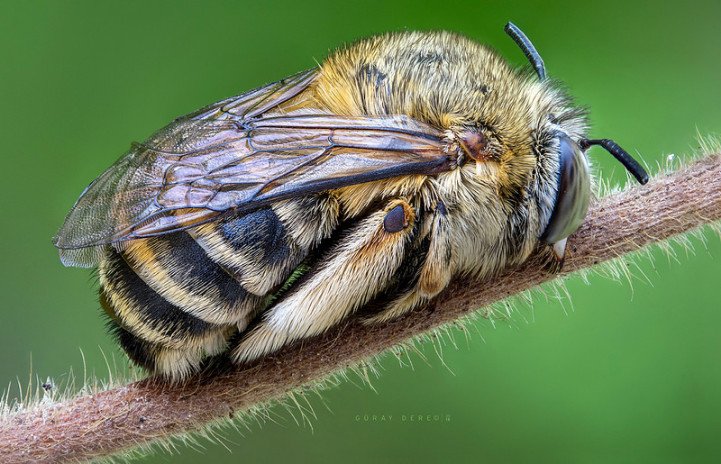
Nap time Bees sleep by bowing their head to towards the ground, stooping down their antennae and resting their wings on their bodies. Source: ScienceABC/Flickr
The sleep patterns of bees
Unlike humans, not all bees conform to a circadian rhythm (sleep at night, active during daylight). The variance depends on the role of a bee in a hive.
Only the older ones, known as ‘Forager’ bees, tend to sleep at night. Whereas a worker bee, known as a ‘Callow’, may take sudden, irregular light naps throughout the entire day and lack a fixed pattern.
This is due to forager bees lacking the effusive energy that worker bees possess to work unceasingly, and this is simply down to old age. Diligent worker bees, however, only require short power naps to get through their day.
Napping bees also demonstrate sleep phases, such as relaxed, light and deep sleep.
Because forager bees need relatively long, undisturbed deep sleep, they tend to sleep on the fringes of the hive, away from the chaotic activity in the center; while worker bees participating in light sleep phases are content to sleep in the center with other worker bees.
Source: ScienceABC.com
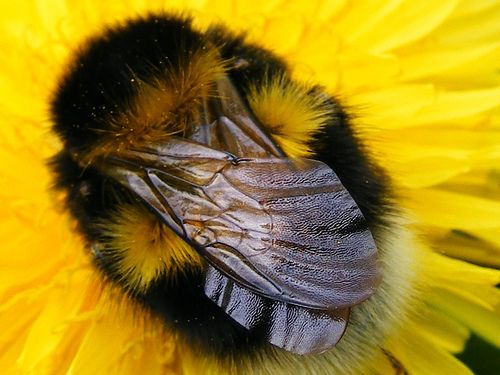
Buzzzzzzzzzzzzzzzzz…. Bees can often be found sleeping on flowers, however they usually buzz away as soon as they encounter any disturbance. Source: Pinterest
Why do bees sleep?
So now that we know that bees do indeed sleep, you might wonder what purpose it serves for them? Scientists have narrowed down why bees might sleep to three reasons:
1. Memory consolidation
Like humans, bees are clearly social animals, and the communication of information between them is of great importance. However, information isn’t simply received and stored for later use. In order to cement its place in the brain, any given chunk of information is passed from short-term memory to long-term memory by the process of ‘consolidation’.
This “cement” can take some time to dry. Consolidation requires hours, sometimes days, depending on the quantity of information. Sleep has been shown to be the major facilitator of consolidation. Without deep sleep, consolidation is denied, and consequently, memory retention is seriously impeded.
Consolidation isn’t just restricted to us, but bees as well. In a sort of Pavlovian experiment, bees were conditioned to associate food with a combination of a certain odour and a small amount of heat.
The bees who were permitted to fall into deep sleep were the only ones who recalled this association, unlike the bees roused in light sleep, who seemed indifferent to the odour and heat.
So, bees must sleep to consolidate the information they acquire through their interactions with other bees. (Continued below)
Source: ScienceABC.com
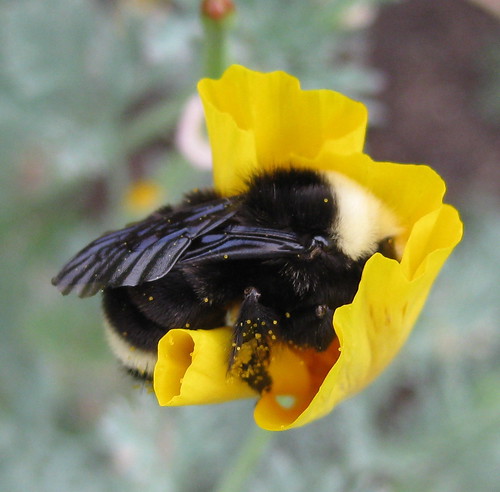
Ever BEEn so tired you fall face-first into your work? Like humans, a bee’s performance—be it waggle dance or learning new information—is compromised when it is denied deep sleep. Source: HomeOfTheBudds.typepad.com
Why bees sleep, continued
2. Disruption of the ‘waggle’ dance
Bees perform what’s referred to as a ‘waggle dance’ by assuming a posture where their abdomen is directed at a certain angle with respect to the position of the sun. The waggle dance is exclusively performed by experienced forager bees to direct other bees towards a new source of nectar or pollen—a flower.
It has been shown that a lack of sleep disrupts the efficacy of the waggle dance. This could lead to poor productivity or a waste of energy, as the ‘dancer’ might lead other bees in the wrong direction.
3. Difficulty in learning new routes is a danger
Even if a forager bee leads his hive-mates to a new source of nectar or pollen, a sleep-deprived bee may not be able to return to the hive due to a malfunctioning memory. The bee might find it difficult to learn this new route home. This could be a direct consequence of the denial of memory consolidation.
Like humans, a bee’s performance—be it waggle dance or learning new information—is threatened when it is denied deep sleep. This renders it tired and fatigued during the day.
Source: ScienceABC.com
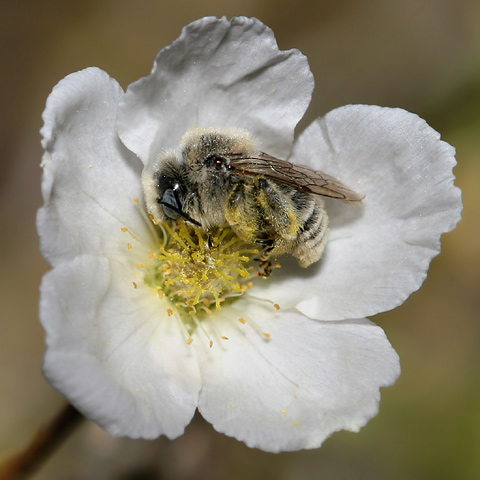
Scientists speculate there are good reasons for bees to sleep It has been shown that a lack of sleep disrupts the efficacy of the waggle dance. This could lead to unproductivity or a waste of energy, as the ‘dancer’ might lead other bees in the wrong direction. Source: FireflyForest .net

Bed & Breakfast Someone looks comfy. Source: JohnKimber/Flickr
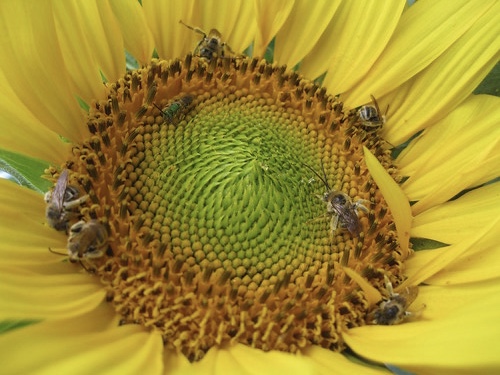
Slumber Party If the flower is big enough it is not unknown for more than one bee to catch 40 winks with some hive-mates. Source: HomeOfTheBudds.typepad.com
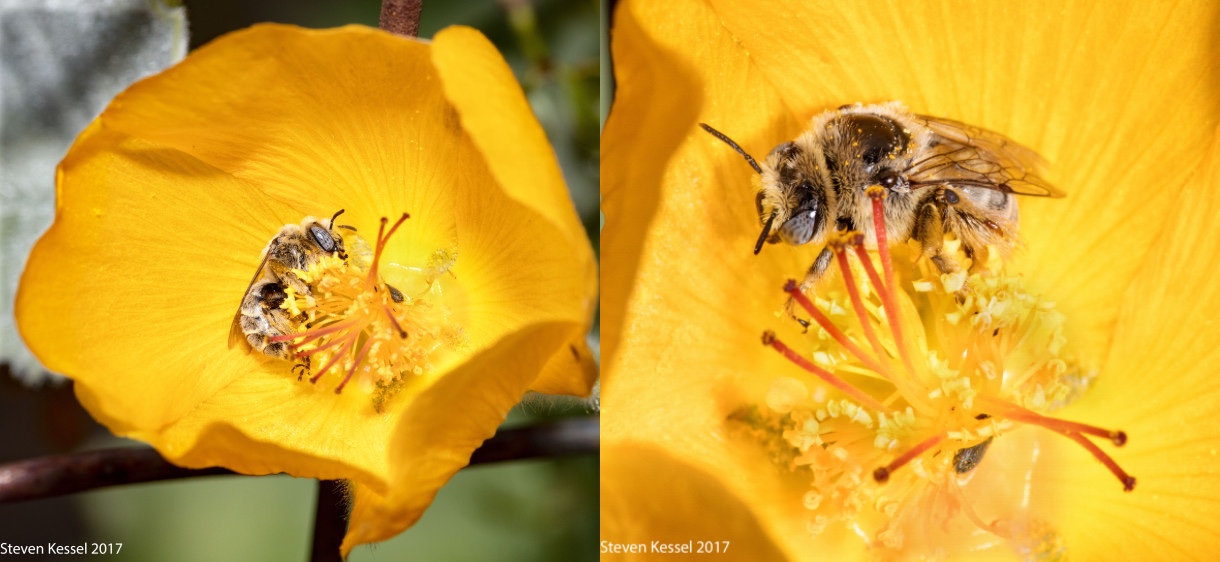
Only older bees, known as ‘Forager’ bees, tend to sleep at night Whereas a worker bee, known as a ‘Callow’, may take sudden, irregular light naps throughout the entire day and lack a fixed pattern. Source: ©StevenKessel/SonoranImages.wordpress.com
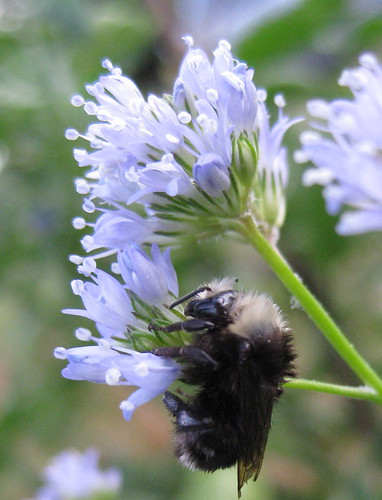
Bees clamp their mandibles onto a plant before sleep so as not to fall or be blown off With its dropping antennae, this bee is fast asleep even though it appears to be dangling. It’s mandibles, or jaws, are clamped tightly to the plant. Source: HomeOfTheBudds.typepad.com
HOW TO HELP BEES: 8 PRACTICAL ACTION STEPS YOU CAN TAKE TO BEFRIEND BEES AND MAKE A REAL DIFFERENCE
The news is abuzz with hair-raising headlines about global bee health, but what can we actually DO as individuals to help our little friends? The good news is there are plenty of ways you can get involved. Here are 8 ways YOU can do your bit to help bees wherever you live and you don’t need to become a beekeeper — unless that kind of thing gives you a buzz!